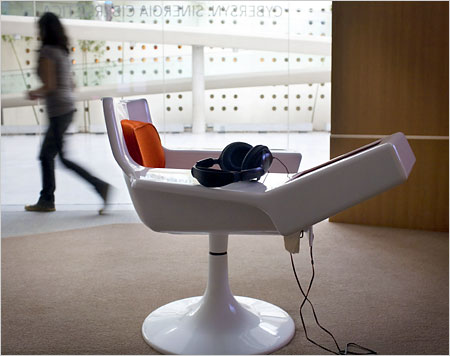Two weeks ago in Basel, at the Shift Festival, I saw some material about the Cybersyn project that struck me as fascinating.

“Project Cybersyn was a Chilean attempt at real-time computer-controlled planned economy in the years 1970–1973 (during the government of president Salvador Allende). It was essentially a network of telex machines that linked factories with a single computer centre in Santiago, which controlled them using principles of cybernetics.
(…)
Project Cybersyn was a Chilean attempt at real-time computer-controlled planned economy in the years 1970–1973 (during the government of president Salvador Allende). It was essentially a network of telex machines that linked factories with a single computer centre in Santiago, which controlled them using principles of cybernetics. The principal architect of the system was British operations research scientist Stafford Beer.“
Country computing: a real-time feedback loop
Interestingly, Cybersyn design has been heavily influenced by the architect of this system, Stafford Beer, a cyberneticist specialized in feedback loops of management in corporations. The idea was basically to design a system for capturing, processing and presenting economic information to be managed in real time. A sort of feedback loop with the population, based on various organizations models better described here or in this lecture called “Fanfare for Effective Freedom: Cybernetic Praxis in Government” [PDF]. Some examples below of the underlying model of Cybersyn:


The idea was to have so-called “algedonic meters” in people’s home, i.e. warning public opinion meters that would be able to transmit Chilean citizens’s pleasures/displeasures to the government or television studio in real time. The government would then be able to respond rapidly to public demands based on these information, (”rather than repress opposing views” as proposed by Stafford Beer).


![]()
User Interface design
Also, the interface design has been carried out by the Gui Bonsiepe a German designer working in Chile at the time of the project. Eden Medina, a researcher at Indiana University in the US is currently writing a book about this project (see here). Some quotes from here found there that I’ve found intriguing:
“I think the image of the operations room looks like something out of ‘Star Trek’or 2001. Whenever I show that image, people are stunned. Most people wouldn’t associate that futuristic image with the Allende period in Chile.
(…)
the flat panel projection screens used a series of slide projectors located behind the wall that were attached to the armrests of the chairs. When you pushed a button on the armrest, it would change the slide on the screen. Each of these slide images was hand-drawn by some of Chile’s top graphic designers. It looked like something that was real-time and highly automated — but you have to remember, this was the 1970s.“


 [Image: Gold nanoparticles, courtesy of
[Image: Gold nanoparticles, courtesy of  [Image: Gold nanoparticles, courtesy of
[Image: Gold nanoparticles, courtesy of 